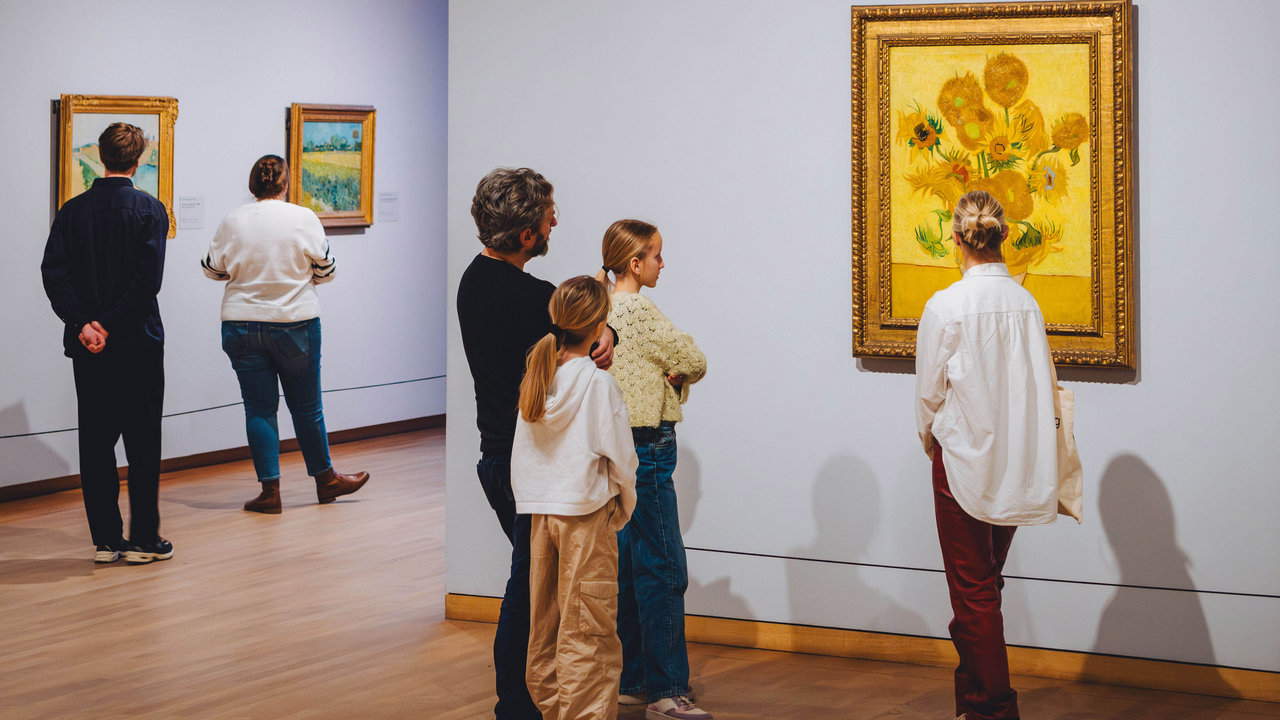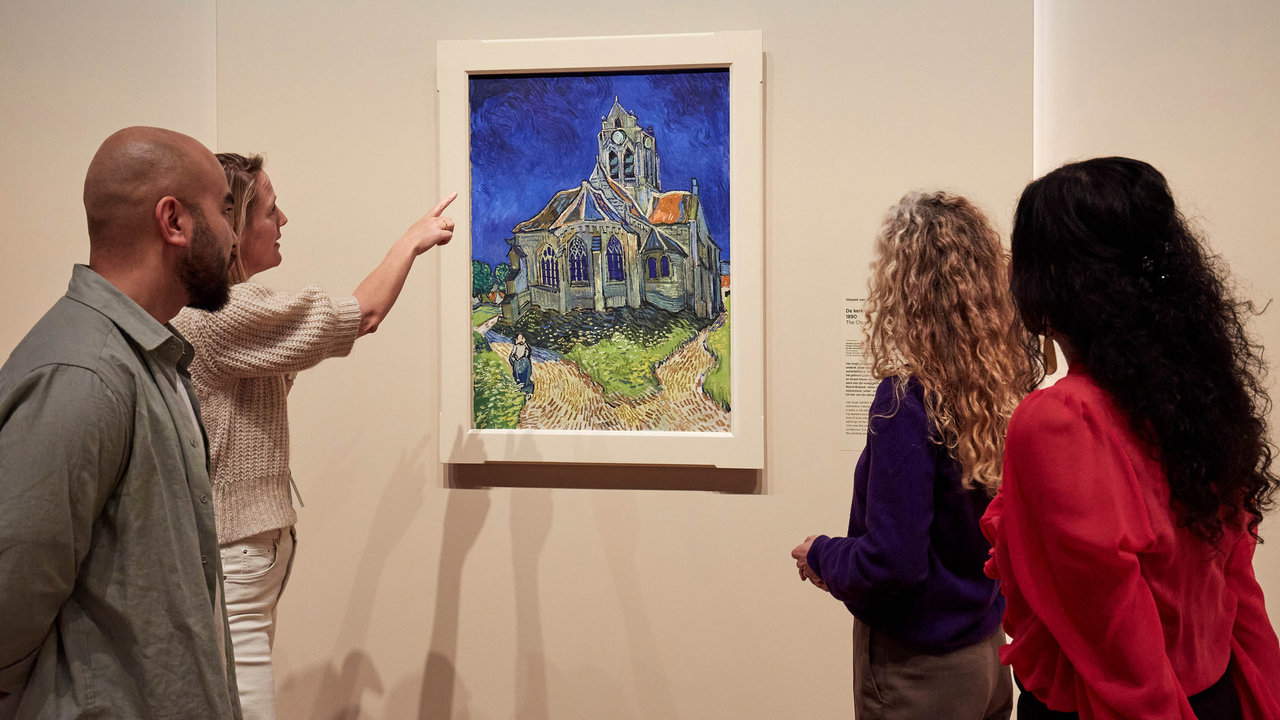The Van Gogh Museum in Amsterdam is in danger of closing: that’s thealarm raised by director Emilie Gordenker. The cause? The possibility that the Dutch government will not keep the promises made to Vincent Willem van Gogh (the artist’s nephew, son of his brother Theo and sister-in-law Johanna Bonger van Gogh) in 1962 as part of the agreements that led to the founding of the museum. “If this situation persists, it will be dangerous for art and for our visitors,” Director Gordenker told the New York Times. “That’s the last thing we want, but if it came to that, we would be forced to close the building.”
Let’s briefly recap. After Vincent van Gogh’s death, much of his art and collection remained with the family: some of it was sold by Johanna “Jo” van Gogh, his sister-in-law, following a shrewd policy that helped drive up the market prices of Vincent’s works and stimulate critical interest in them. In part, however, they remained in the family’s possession, so Vincent Willem van Gogh and the Dutch government entered into an agreement to prevent the dispersal of the collection. Van Gogh’s grandson transferred ownership of the entire collection (more than two hundred paintings, five hundred drawings, and nine hundred letters, as well as the artworks of Vincent’s contemporaries collected over the years) to the Vincent van Gogh Foundation, established specifically for this purpose. In return, the Dutch state pledged to provide sufficient resources for the construction and maintenance of a new museum in which the collection would be permanently preserved and exhibited to the public.

After its opening in 1973, the Van Gogh Museum quickly enjoyed considerable national and international success. The museum, as it is known, brings the artist’s story to life for millions of visitors each year through its collection of Vincent van Gogh’s paintings, drawings, and letters, which is unique in the world and also includes important works by his contemporaries, all again with exhibitions over the years that have helped to deepen the understanding of Van Gogh’s work, and with participatory and innovative public programs. Not only that, the museum has also become a major cultural destination in Amsterdam, a situation that has not only strengthened the city’s global reputation as a capital of art and creativity, but has also played an essential role in presenting the Netherlands’ rich artistic heritage to an international audience. The Van Gogh Museum, moreover, manages to generate 85 percent of its revenue from its own forces (a very high percentage compared to other public museums).
However, the Van Gogh Museum’s success also has a downside: since its opening in 1973, it has attracted nearly 57 million visitors, peaking at 2.6 million in 2017, while the museum building, owned by the Dutch government, was not designed for such an influx. After more than 50 years of intensive use, the museum building no longer meets the requirements of current flows, as it has deficiencies in sustainability, security, and air conditioning. The building is in a condition described as “very bad” by management and requires significant investment to keep them safe and accessible to the public. Most of the technical facilities have reached the end of their operational life cycle, are obsolete and increasingly difficult to maintain due to the lack of spare parts. As a result, routine maintenance is no longer feasible and facilities need to be replaced. In addition, starting in 2024, all Dutch public buildings will have to undergo sustainability improvement measures, which will require extensive and costly structural changes. Finally, extraordinary maintenance will be required to comply with legal and contractual obligations.


Now, the Van Gogh Museum has commissioned a plan for major maintenance and sustainability work, called "Masterplan 2028." The work is expected to begin in 2028 and last about three years. During this period, the museum will remain open to the public only partially. The total cost of Masterplan 2028 is 104 million euros, including 76 million euros for maintenance, replacement and investment works; 23 million euros for sustainability; and 5 million euros for improvements. However, the museum is unable to finance Masterplan 2028 on its own, and the government has not allocated sufficient funds for the Van Gogh Museum’s buildings and facilities. The museum is already using its own resources to make the renovation possible; for example, it is covering lost income (about 50 million euros) during partial closures for renovation and is allocating equity capital to qualify for a government loan. An annual contribution of more than 11 million euros is required to cover necessary renovations and mandatory sustainability work, to finance the project, and to set aside funds for future routine and extraordinary maintenance. The Ministry of Education, Culture and Science, however, will not contribute more than the current support level of 8.5 million euros, leaving the museum with a deficit of 2.5 million euros on an annual basis.
This is a deficit that the museum cannot afford, the directorate points out. So, if the Dutch state fails to honor its historic agreement with the “Engineer,” as Vincent Willem van Gogh was called, and thus fails to provide sufficient funds for renovations, sustainability improvements, and periodic and extensive maintenance in the future, the planned project could not proceed. In that case, the museum would risk closure because it would not be able to guarantee the safety of the collection, visitors, and staff.
The Vincent van Gogh Foundation, which owns nearly the entire collection of works by Van Gogh and his contemporaries housed at the Van Gogh Museum, fully supports the museum’s position. “The Vincent van Gogh Foundation is deeply concerned about the accessibility of the Van Gogh collection in light of the current funding problems related to the necessary investment in the buildings and facilities of the Van Gogh Museum,” it said in a note. “Engineer Vincent Willem van Gogh, grandson of the artist, entered into an agreement with the Dutch state in 1962 and made his private collection accessible to the public. In return, the Dutch state must fulfill its legal obligations.” “At the time,” the museum recalls, “the management, preservation and display of the collection were considered more important to the Netherlands than the financial consequences. This belief remains unchanged today, given the enormous success of the museum and its importance to the Netherlands as a whole. The solution is simple: the government must allocate sufficient resources for renovations, sustainability improvements, and major maintenance savings. Because a promise made is a promise kept. Even when it comes to a government.”
 |
| Amsterdam's Van Gogh Museum faces closure: museum's rallying cry |
Warning: the translation into English of the original Italian article was created using automatic tools. We undertake to review all articles, but we do not guarantee the total absence of inaccuracies in the translation due to the program. You can find the original by clicking on the ITA button. If you find any mistake,please contact us.